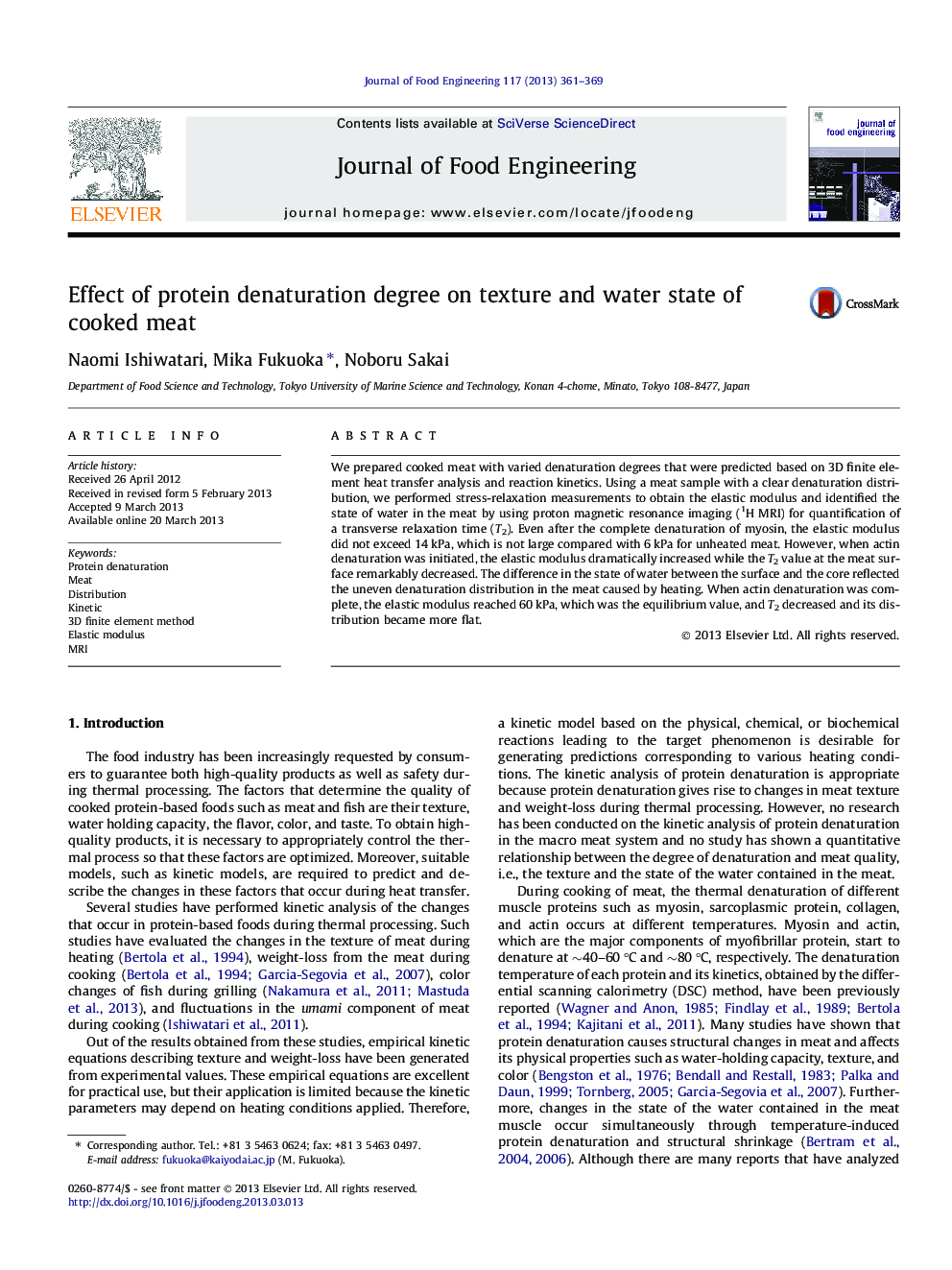| Article ID | Journal | Published Year | Pages | File Type |
|---|---|---|---|---|
| 223431 | Journal of Food Engineering | 2013 | 9 Pages |
•Distribution of protein denaturation formed in the meat during heating was predicted.•Elastic modulus of a meat sample with a clear denaturation distribution was measured.•Myosin denaturation has a small influence on the elastic modulus of meat.•When actin starts to denature, the elastic modulus drastically increased.•Water state in meat with the varied denaturation distribution was identified by using 1H MRI.
We prepared cooked meat with varied denaturation degrees that were predicted based on 3D finite element heat transfer analysis and reaction kinetics. Using a meat sample with a clear denaturation distribution, we performed stress-relaxation measurements to obtain the elastic modulus and identified the state of water in the meat by using proton magnetic resonance imaging (1H MRI) for quantification of a transverse relaxation time (T2). Even after the complete denaturation of myosin, the elastic modulus did not exceed 14 kPa, which is not large compared with 6 kPa for unheated meat. However, when actin denaturation was initiated, the elastic modulus dramatically increased while the T2 value at the meat surface remarkably decreased. The difference in the state of water between the surface and the core reflected the uneven denaturation distribution in the meat caused by heating. When actin denaturation was complete, the elastic modulus reached 60 kPa, which was the equilibrium value, and T2 decreased and its distribution became more flat.
